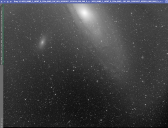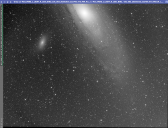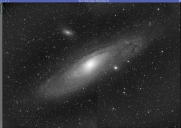Howdy, Stranger!
It looks like you're new here. If you want to get involved, click one of these buttons!
In this Discussion
Light pollution gradients before and after meridian flip. DBE?
Hello all.
I live in a medium polluted sky, and usually have no problem when imaging in Narrow Band.
But in LRGB I always have strong light gradients.
My concern is about integrating images taken before and after the meridian flip.
I have opposite 180º gradients due to the flip, and I always get complicated master images.
Indeed, I've noticed that if the number of images at each side is largely different, I got dark corners sometimes etc.
In usual unique images is not a big problem, but this time I'm trying a M31 Mosaic, and at the union zone I got a dark corner from one pane next to a very light corner form the other one!!
I attach some images: Red panes, and the L star alligned mosaic.
I also tried local normalisation, linar fit between subs, etc, but the result is no good.
It's very difficult for my pseudo-beginner level!.
I have not finished all your Fundamental videos, but I have not seen a clue.
My question:
What do you do with that kind of gradients?
Do you integrate all the images in a row, and try to deal with that problem at the DBE moment?
Or do you try a minimum DBE to each individual sub once calibrated and just before the integration?
I never heard about applying DBE to individuals subs, so I prefer asking here!
In that way, the integration process has more consistent data, not a gradient changing 180º in some images...
Thank you.


Screenshot 2020-11-15 at 19.05.10.png
2274 x 1730 - 5M


Screenshot 2020-11-15 at 19.05.19.png
2270 x 1734 - 5M


Screenshot 2020-11-15 at 19.14.04.png
3230 x 2278 - 8M

Comments
Your questions have some assumptions built into them...and I would like to sort it all out. However..it would require quite a bit of typing! I am hoping to make video that answers your questions.